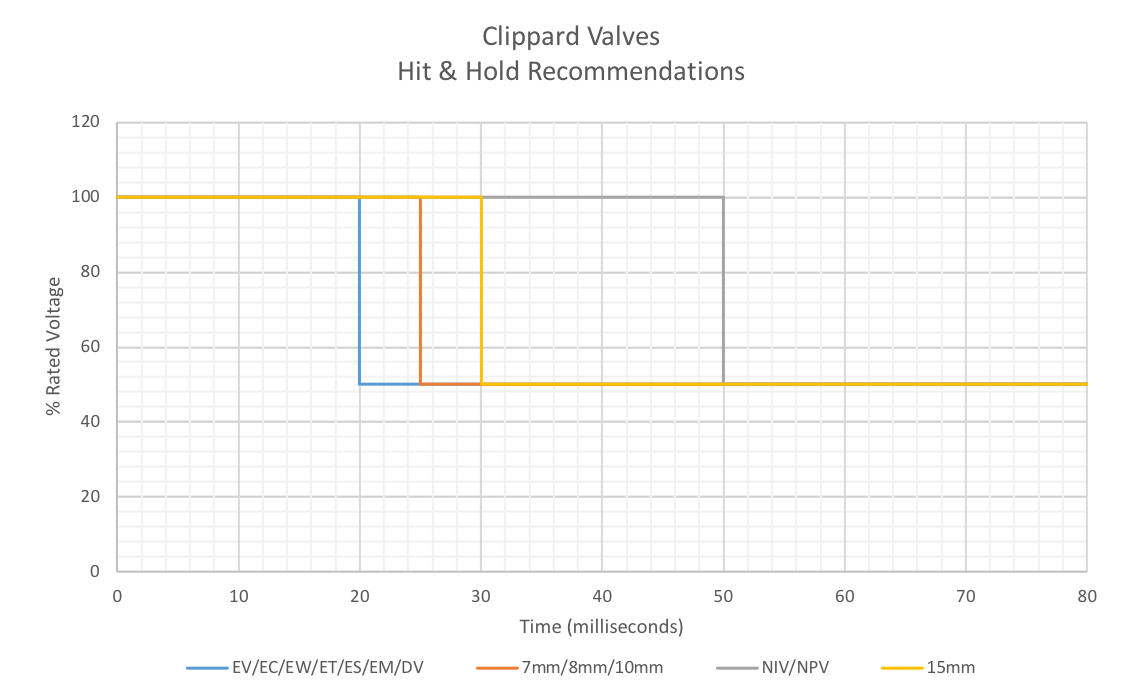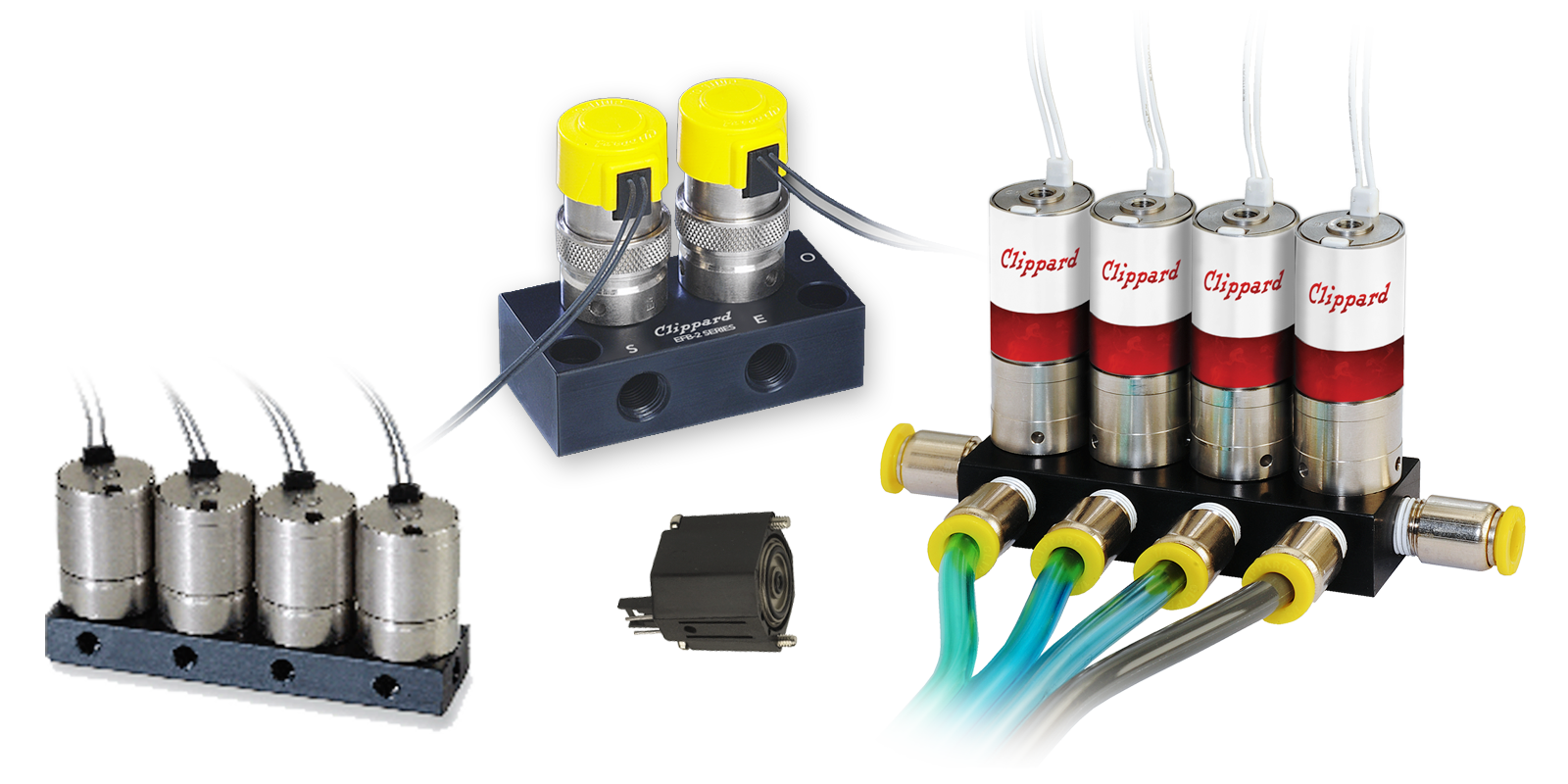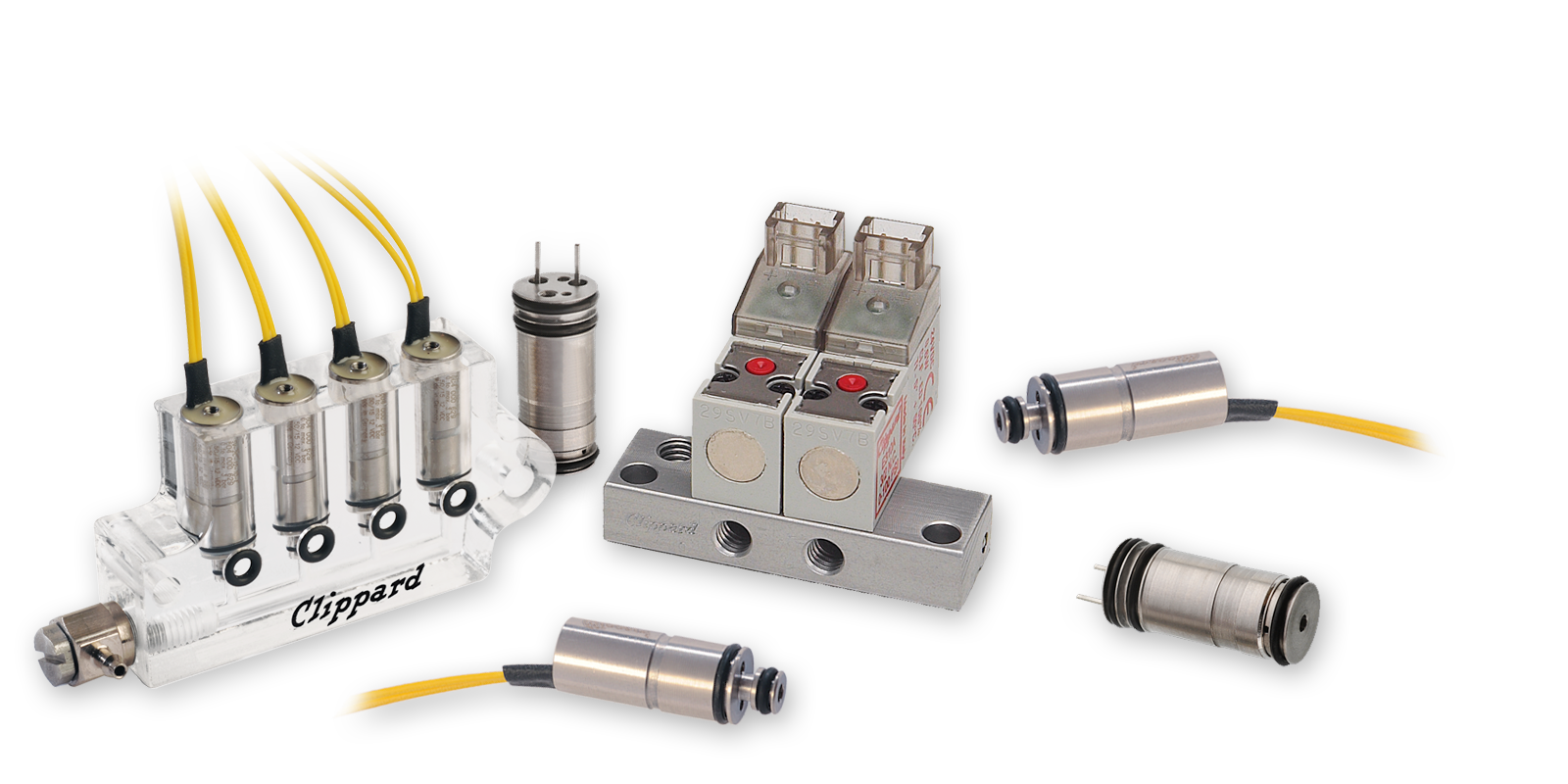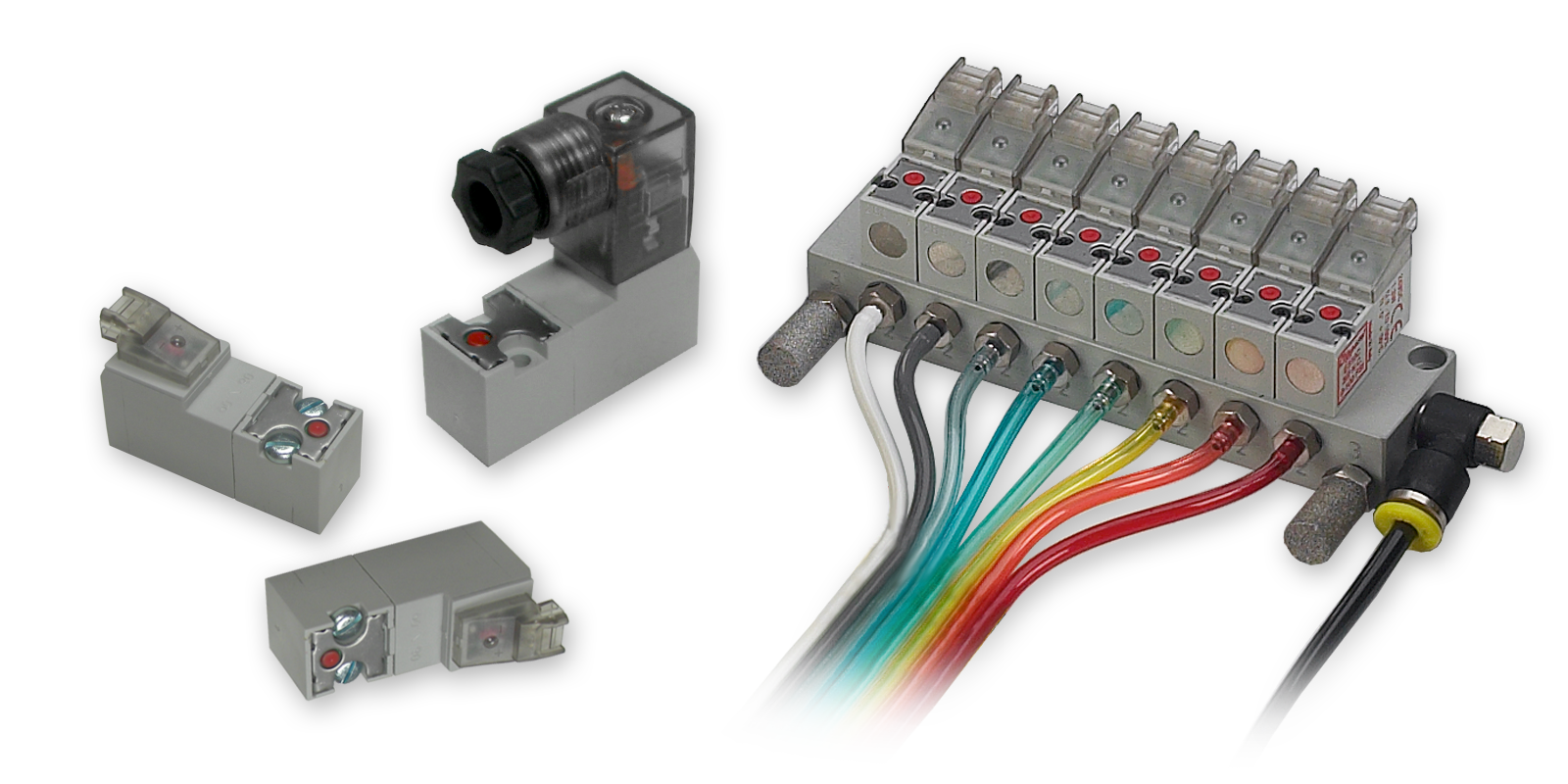Hit & Hold Circuit Recommendations for Clippard Valves
Primary Advantages
of a Hit and Hold Circuit:
• Lower power
consumption
• Less heat generation
by the coil
• Increased cycle life
Hit and hold circuits allow valves to be held on for long periods of time at a lower voltage than their rated voltage.
The general principle behind a hit and hold circuit is that the valve is energized to full power for a short period of time before dropping the voltage and current to a specified level. In a typical hit and hold circuit, the hit is at the standard rated voltage for a specified period of time. The hold is usually 50% (or less) of the rated voltage.
Many of Clippard's standard valves can be used in a hit and hold circuit. Below are some of Clippard's recommendations for designing a successful hit and hold circuit using our valves. If you have specific questions that are not addressed here, please contact Clippard's Technical Support Department.
EV, ES, EM, & DV Valves
For our standard mouse valves, Clippard recommends hitting the valve with 100% of the rated voltage for 20 ms minimum, and then dropping the voltage to 50% of the rated value.
If the valve is being used with reverse flow, the hit time may need to be extended depending on the pressure.
EXAMPLE: For a 12V valve, hit the valve with 12V for 20 ms, then drop the voltage to 6V.
• EV Series Valves
• ES Valves
• EM Valves
• DV Series Valves
7 mm (SV), 8 mm (ST), & 10 mm Valves
For our 7 mm, 8 mm, and 10 mm valves, Clippard recommends hitting the valve with 100% of the rated voltage for 25 ms minimum, and then dropping the voltage to 50% of the rated value.
EXAMPLE: For a 12V valve, hit the valve with 12V for 25 ms, then drop the voltage to 6V.
• 7 mm SV Valves
• 8 mm ST Valves
• 10 mm Valves
15 mm Valves
For our 15 mm manifold mounted valves, Clippard recommends hitting the valve with 100% of the rated voltage for 30 ms minimum, and then dropping the voltage to 50% of the rated value.
EXAMPLE: For a 12V valve, hit the valve with 12V for 30 ms, then drop the voltage to 6V.
NIV & NPV Valves
For our isolation and pinch valves, the NIV and NPV series, Clippard recommends hitting the valve with 100% of the rated voltage for 50 ms minimum, and then dropping the voltage to 50% of the rated value.
The 50 ms minimum is a rule of thumb for the entire series. The larger valves require a longer hit time than the smaller valves, so an NR1 may have a required hit time of 15-20 ms, while the larger NR4 may require 30-50 ms, depending on how the valve is driven and used.
Hit and hold is especially important to consider for the NIV isolation valves, since the PTFE internals of the valve can be damaged by prolonged exposure to heat (including heat generated by its own coil). If you are going to hold the valves on for 4-5 minutes or longer, then you should consider implementing a hit and hold circuit to keep the valve from overheating.
EXAMPLE: For a 12V valve, hit the valve with 12V for 50 ms, then drop the voltage to 6V.










